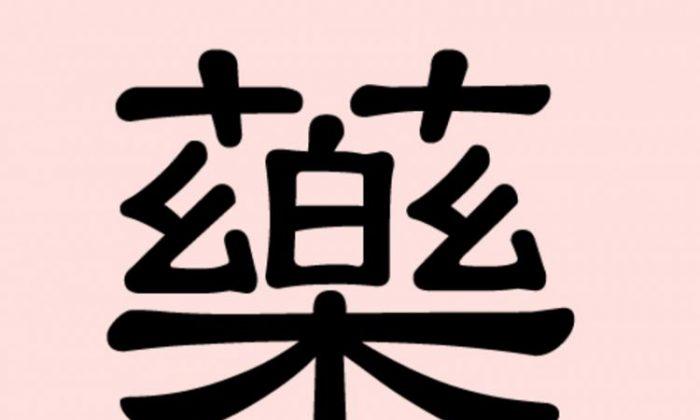The Chinese character 藥 (yào) refers to a medicine or drug. It is composed of two parts. The top part, 艹, is the Chinese radical that indicates grass and grass-related plants, including herbs. The lower part, 樂 (pronounced yuè or lè), is a Chinese character in its own right. It has two meanings: music, as well as delight and happiness.
These two parts and three meanings altogether give insight into how the ancient Chinese understood medicine.
Yellow Emperor’s Battle With Chi You
According to Chinese mythology, Huang Di, or the legendary Yellow Emperor, who is revered as the forefather of the Chinese people, was once challenged to a battle by Chi You, the atrocious leader of an ancient tribe.Blessed by the divine fairy Xuan Nü to promote the virtuous and condemn the tyrannical, the Yellow Emperor was advised in a dream that only the deafening sound of a drum made of the skin of Kui, a wild ox monster that resided in the coastal East Sea, could defeat the metal-headed Chi You and his tribe.
Upon awakening, the emperor immediately ordered the capture of Kui. Kui’s skin was then used to produce 80 drums.
When the emperor’s soldiers sounded the drums on the battlefield, the earth shook in all directions and Chi You’s soldiers were knocked down, their metal heads cracking and in great pain.
Lifesaving Instrument
The music master untied the strings from the bows of the emperor’s army and attached them onto a hollow piece of wood. He then took a small, thin piece of metal and gracefully plucked the strings, producing lovely music. Gradually, the injured soldiers regained consciousness.Inspired by this instrument, Cang Jie, the official in charge of creating characters, constructed the character 樂 for music.
The top half features the 白 (bái) character in the middle, with a “string” on either side. 白, the character for the colour white, in this context refers to the plectrum—the small, flat tool used to strum or pluck a stringed instrument. The bottom half of 樂 is the 木 (mù) character, which means wood.
From Bitterness to Joy
The Chinese character for music has a second meaning: delight and happiness. While the obvious relationship is that beautiful music can bring joy, joy has another relationship to medicine.Medicine is characterized by bitterness, yet a patient is able to regain health and happiness only after suffering its bitterness. This paradox has its root in the “Doctrine of the Mean,” the Confucian classic which teaches that to gain an invincible position one must determine and hold fast to the “mean,” the middle ground between two extremes.
Such a view enables one to find hope amid adversity and to exercise prudence amid prosperity. From this principle, it can be seen why happiness, 樂, is contained in the bitter medicine, 藥.
The 艹 radical at the top of 藥 refers to grass and related plants, including herbs.
According to mythology, Shen Nong, regarded as the father of agriculture in China, sampled hundreds of herbs to test their medicinal values.





